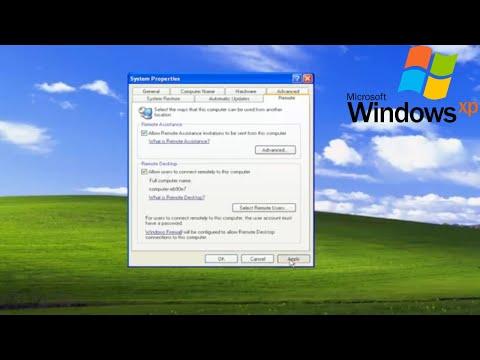A few months ago, I faced a rather unexpected challenge with an old computer running Windows XP. It was an old but trusty machine that I had kept around for specific tasks, and I needed to access it remotely for a project. Having been used to newer versions of Windows, I had forgotten the nuances of configuring Remote Desktop in Windows XP. This seemingly simple task turned into a bit of a puzzle for me, so I decided to dive into how to enable or disable Remote Desktop for Windows XP.
Initially, I wasn’t even sure if Windows XP supported Remote Desktop in the way that modern systems do. To my relief, I discovered that it indeed had support, but the configuration process was not as straightforward as it is with newer versions of Windows. I had to navigate through some somewhat archaic menus and options, which was both nostalgic and challenging.
The first step in the process was to ensure that Remote Desktop was enabled on the Windows XP machine. To do this, I had to access the System Properties window. This involved right-clicking on “My Computer” on the desktop or in the Start menu, and then selecting “Properties.” This action opened a new window where I needed to click on the “Remote” tab.
Under the Remote tab, there were options for configuring Remote Desktop. I was faced with a checkbox that read, “Allow users to connect remotely to this computer.” Naturally, I needed to check this box to enable the feature. However, it was important to note that this option would only be available if I was using a version of Windows XP that supported Remote Desktop, such as Windows XP Professional. The Home edition, unfortunately, does not support Remote Desktop.
Once I enabled the checkbox, the next step involved configuring the user accounts that would be allowed to access the computer remotely. This was done through the “Select Remote Users” button, which opened another window where I could add or remove users who had permission to connect. For security reasons, I made sure to only add the accounts that required access and to use strong passwords for these accounts.
After setting up the user accounts, I needed to ensure that the appropriate ports were open on the computer’s firewall to allow remote connections. Windows XP had its own firewall settings, which could be accessed from the Control Panel. I navigated to “Control Panel,” then “Windows Firewall,” and in the exceptions tab, I made sure that the “Remote Desktop” option was checked. This allowed the necessary network traffic to pass through the firewall, ensuring that remote connections could be established.
Additionally, I had to make sure that the remote connection was possible over the network. This involved configuring the router to forward the appropriate ports, usually port 3389 for Remote Desktop. Accessing the router’s settings was a bit tricky, as it varied depending on the router model, but I managed to find the port forwarding section and set up the forwarding rules to direct traffic to my Windows XP machine.
With the remote desktop now enabled and the firewall and router properly configured, I was ready to test the connection. I used another computer running a newer version of Windows to attempt a remote connection. I opened the Remote Desktop Connection application, entered the IP address of the Windows XP machine, and clicked “Connect.” I was prompted to enter the username and password for the remote account, and once entered, I was connected to the Windows XP desktop as if I were sitting right in front of it.
The process to disable Remote Desktop on Windows XP was equally straightforward but required a similar series of steps. To turn off Remote Desktop, I revisited the System Properties window by right-clicking “My Computer” and selecting “Properties.” On the Remote tab, I simply unchecked the “Allow users to connect remotely to this computer” option. This action effectively disabled the Remote Desktop feature.
I also revisited the firewall settings to ensure that the “Remote Desktop” exception was unchecked, which helped to block any unwanted connection attempts. Additionally, I went back to the router settings to remove the port forwarding rules that I had previously set up. This step was important to ensure that no external connections could be directed to the Windows XP machine.
By carefully following these steps, I managed to successfully enable and later disable Remote Desktop on my Windows XP computer. Although it took some time to get accustomed to the older interface and settings, it was a rewarding experience to solve the challenge. The process highlighted just how much technology has evolved since the days of Windows XP, but it also reminded me of the importance of knowing how to manage and configure older systems when needed.
Reflecting on the experience, I appreciated the opportunity to revisit and understand the intricacies of an older operating system. While it may not be as user-friendly as modern versions, the fundamental principles of configuring Remote Desktop remain quite similar. This journey through configuring Remote Desktop on Windows XP reaffirmed the value of being adaptable and resourceful when dealing with various technology setups.
